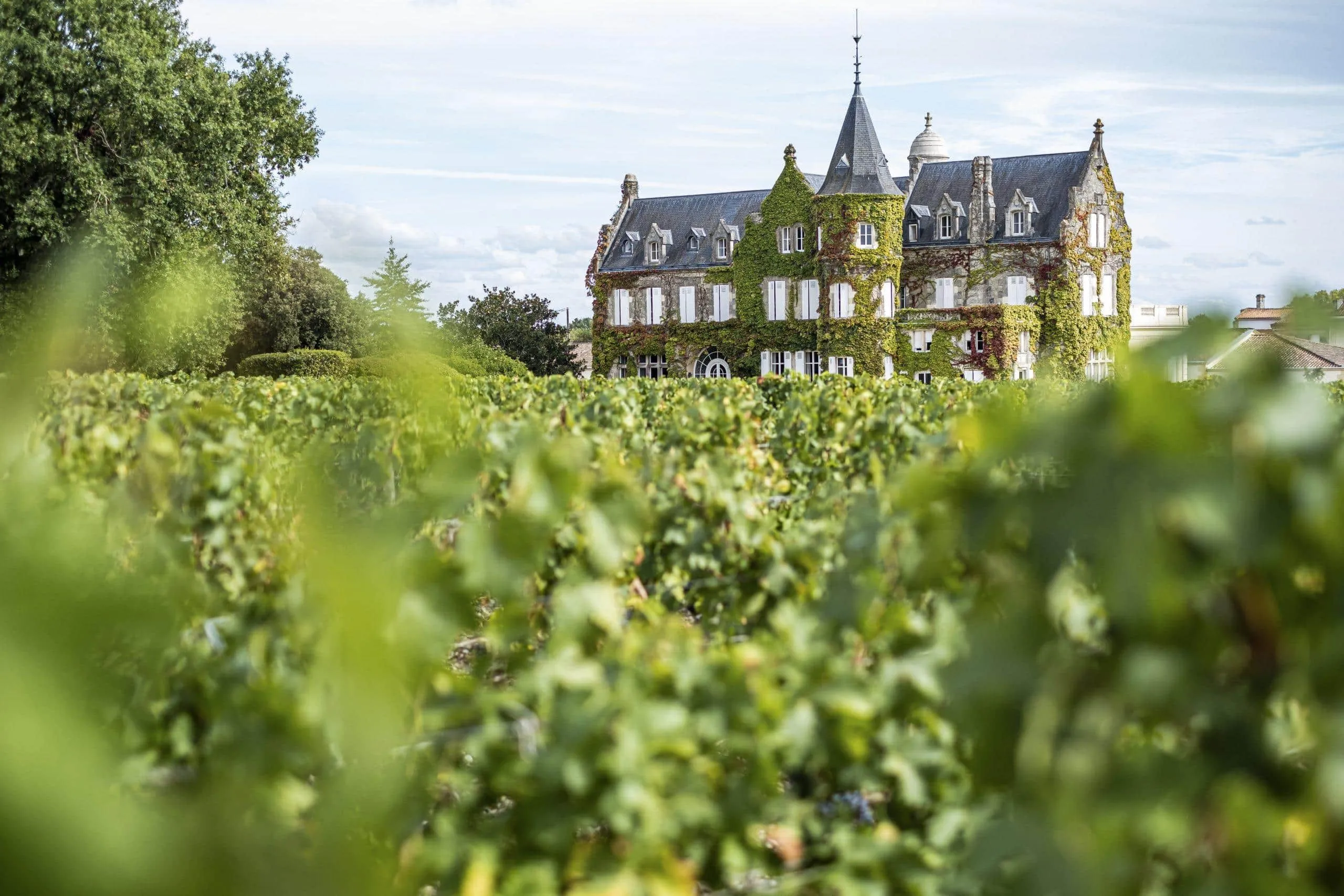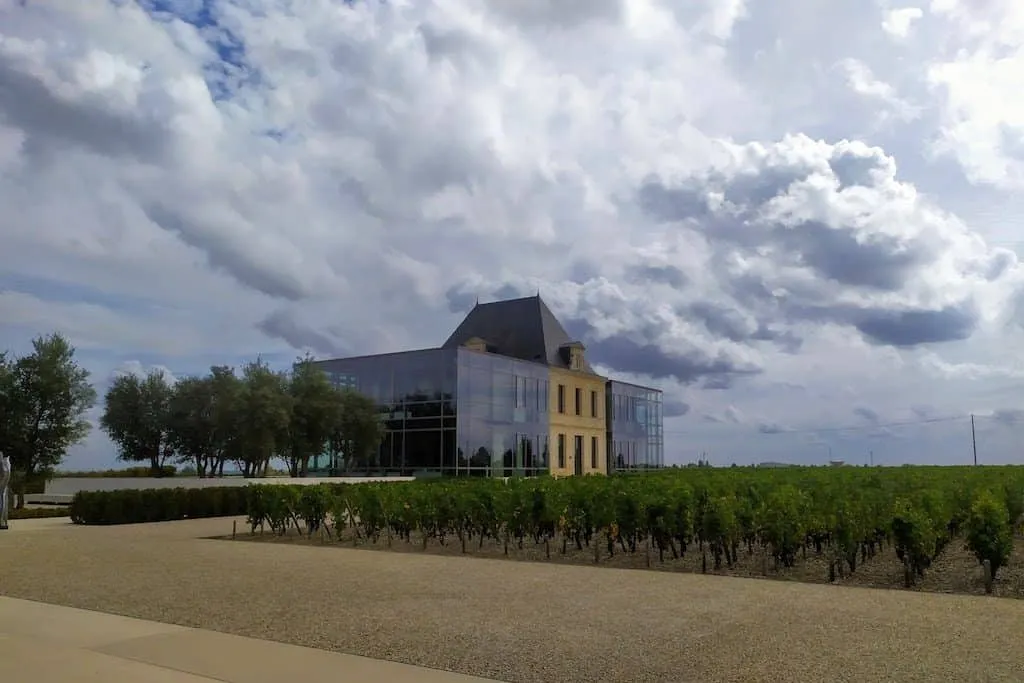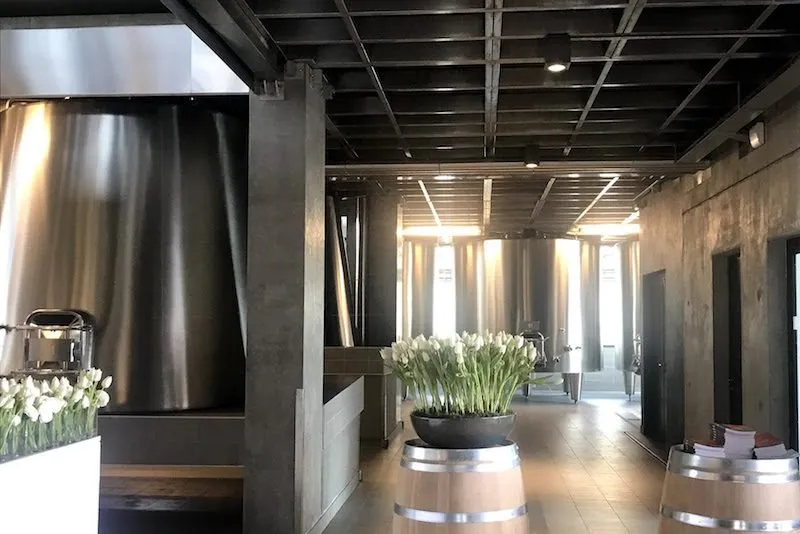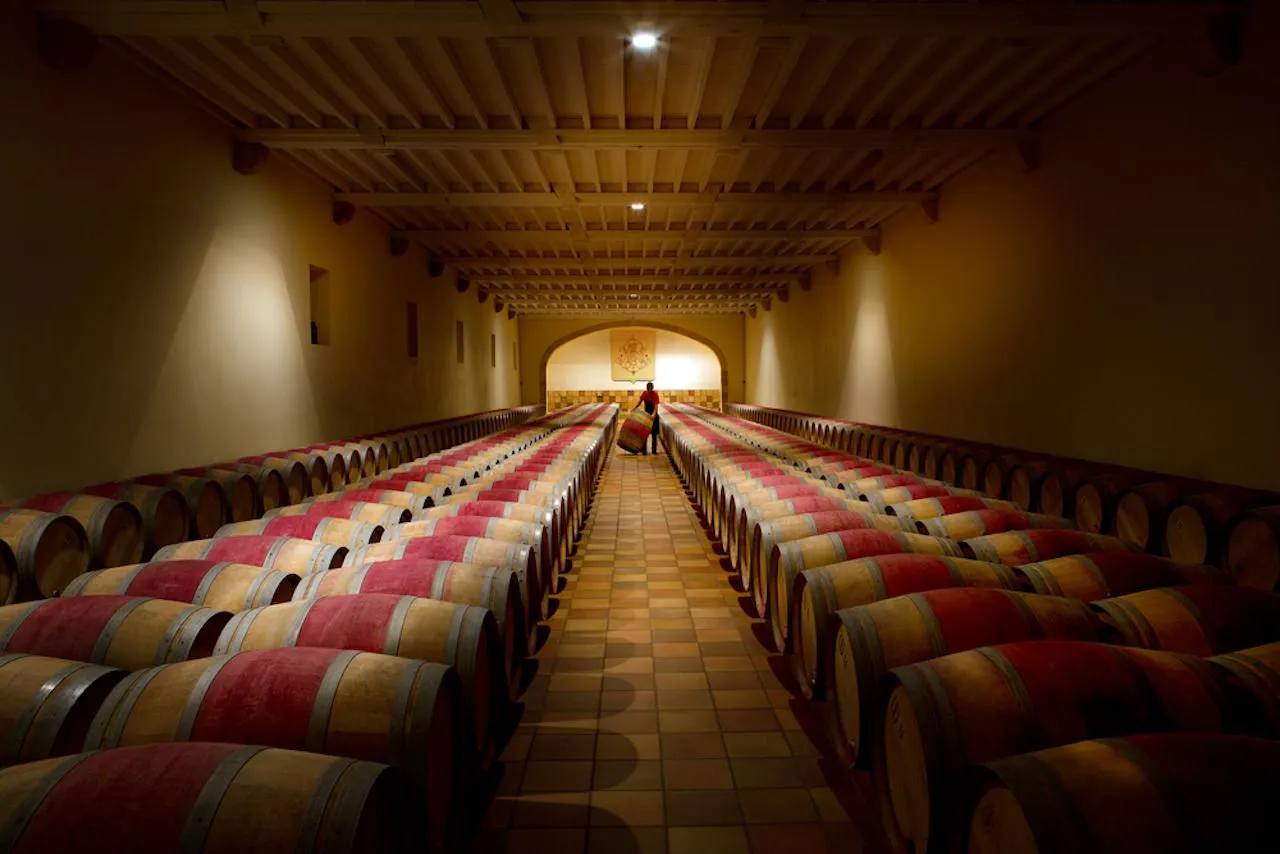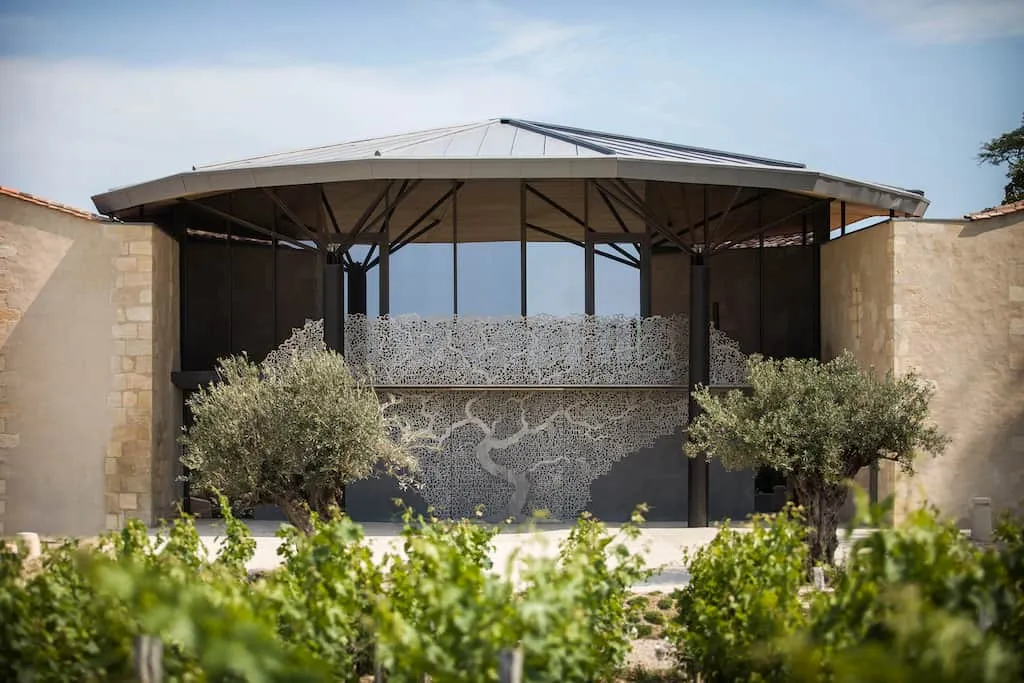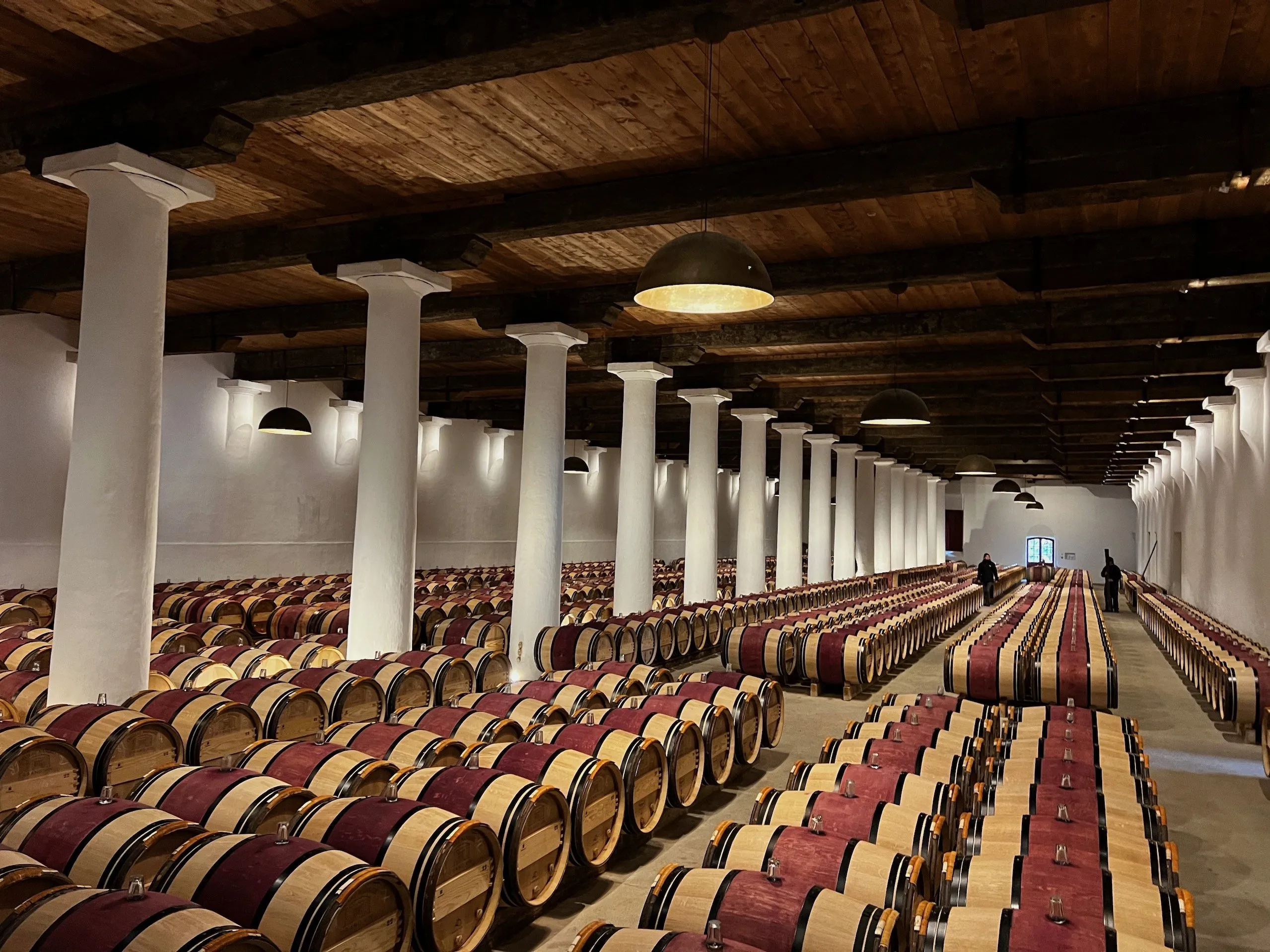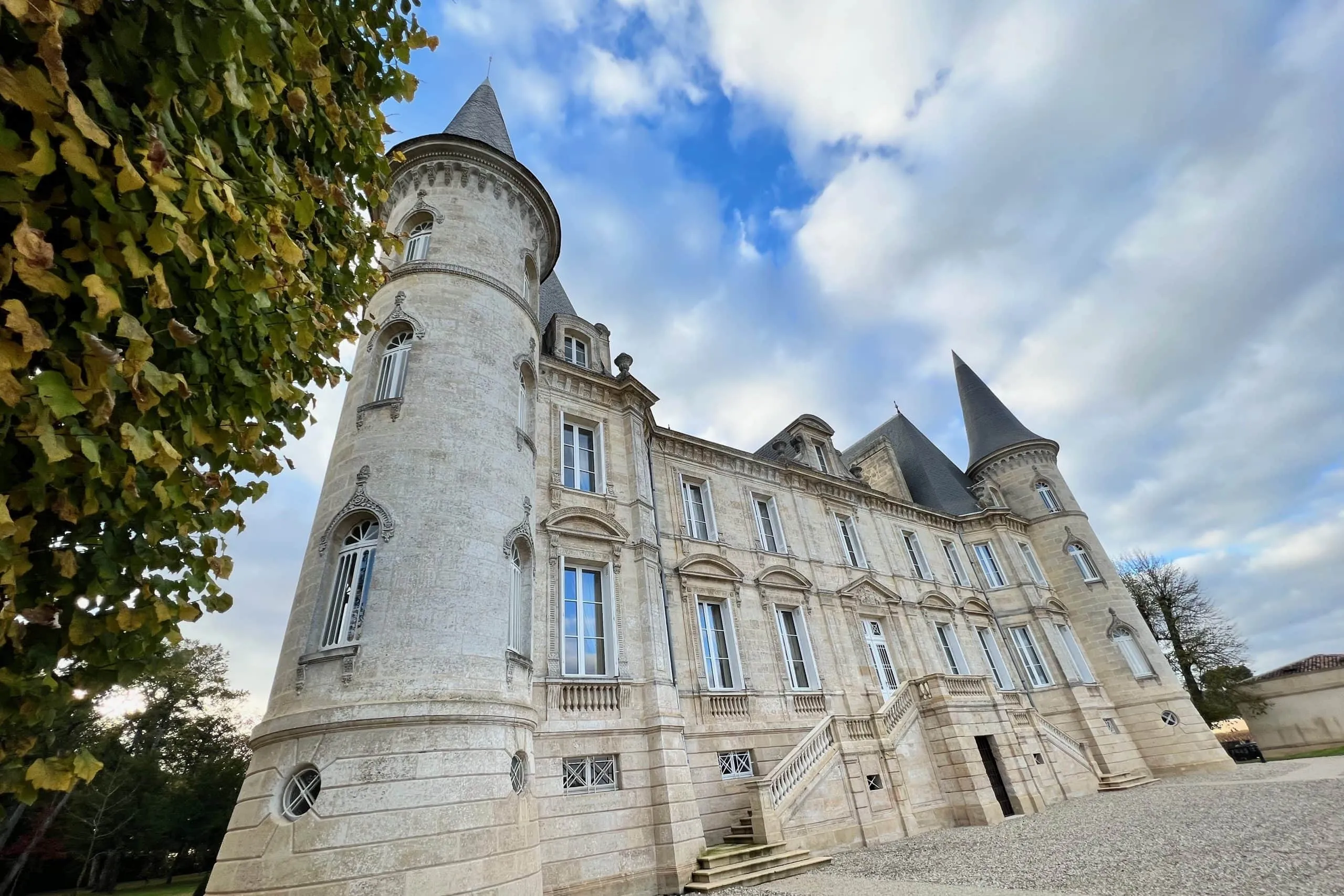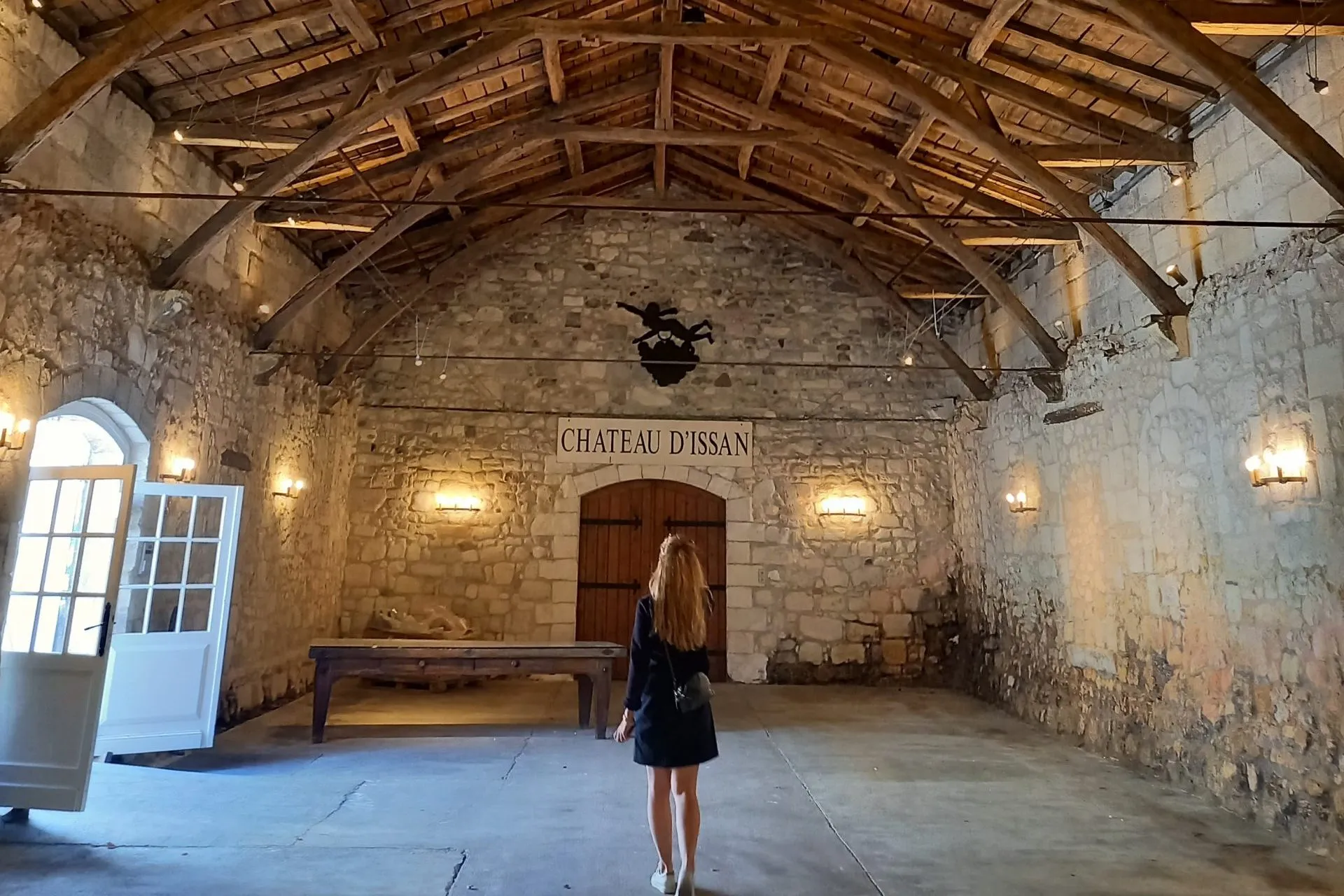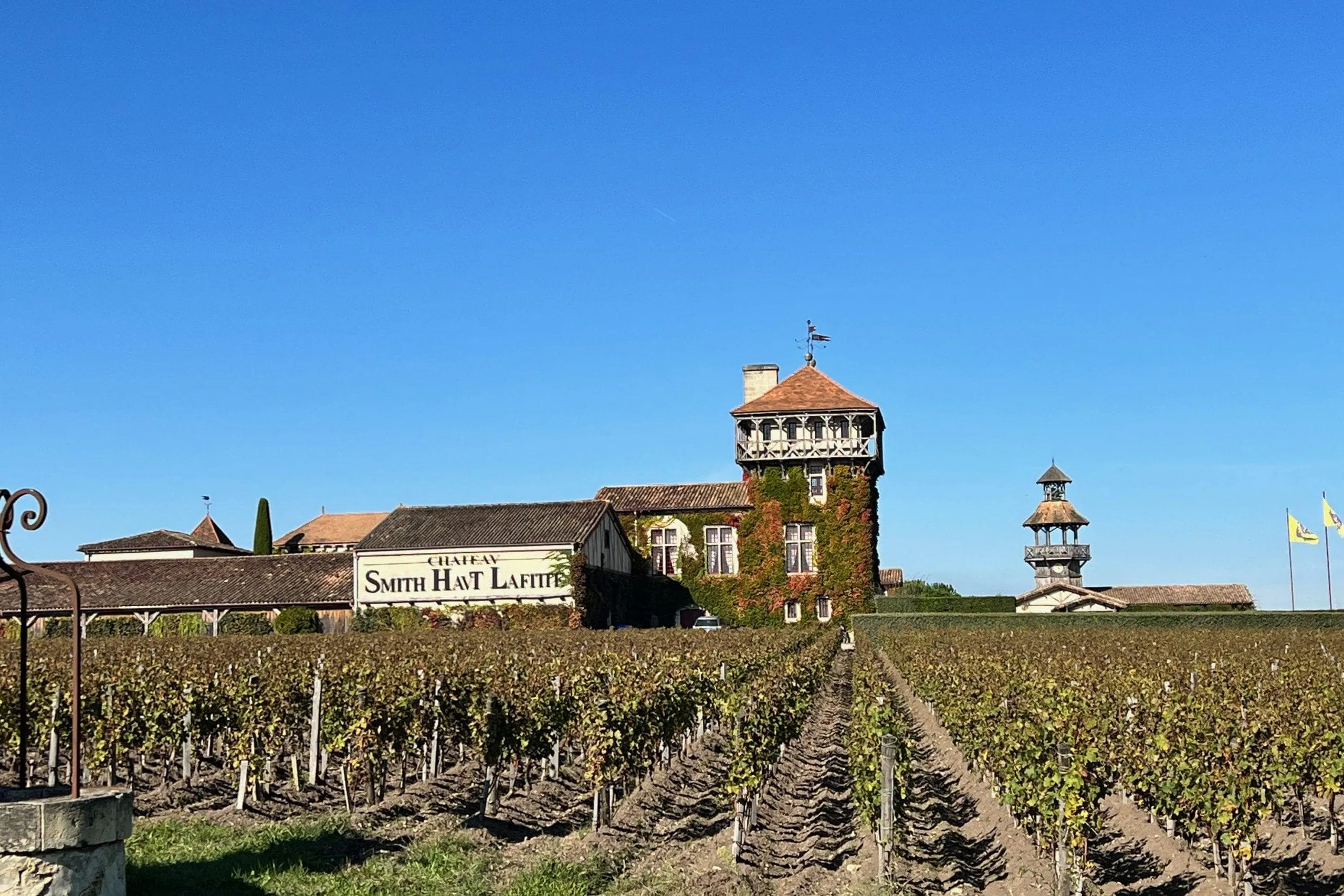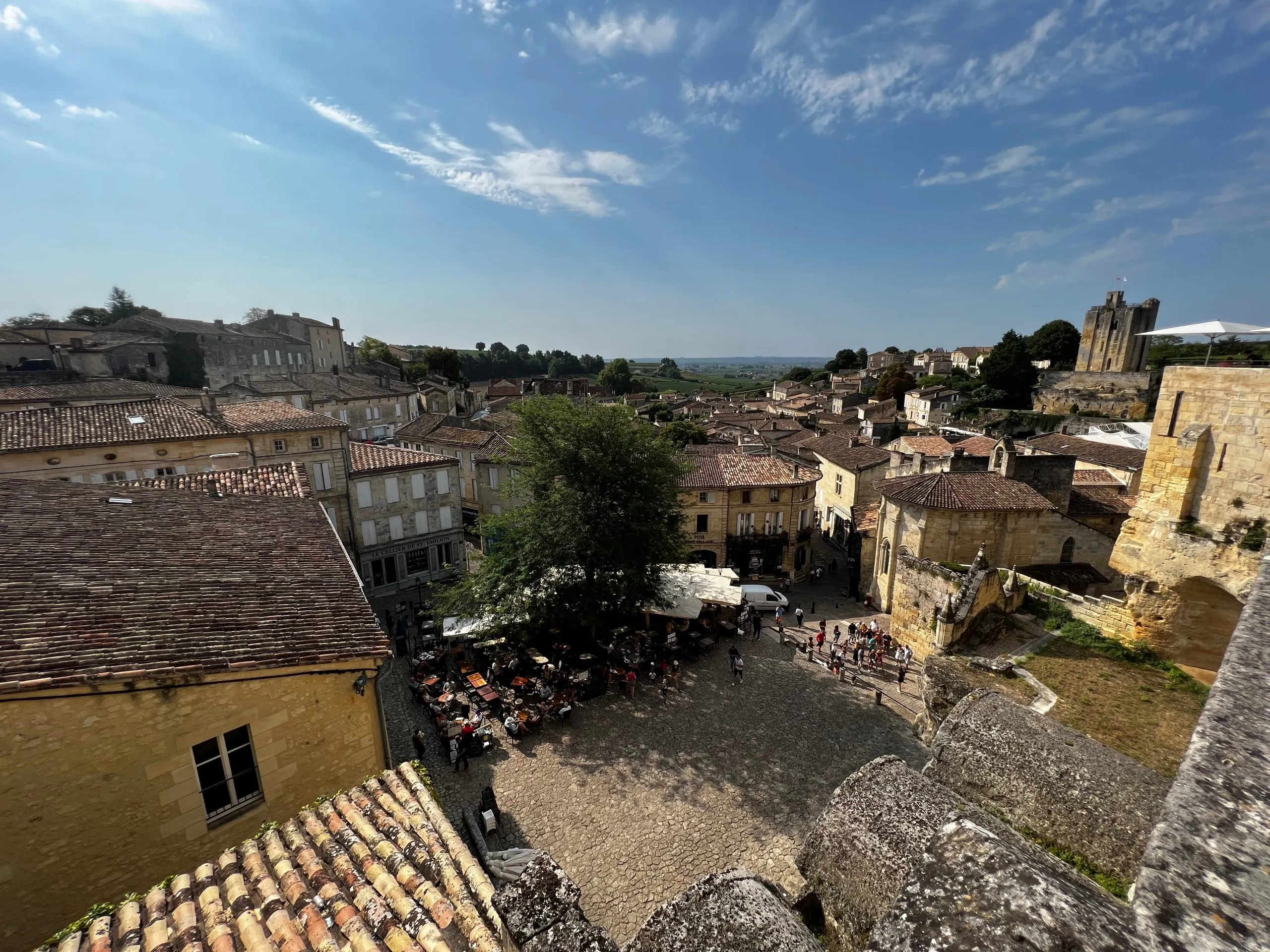As a wine tour guide in Bordeaux, I have visited hundreds of wineries in the region. In this article, I am sharing my suggestions of the wineries to visit in the Medoc.
Table of Contents
The Medoc region is famous for its 1855 grand cru classe wineries and Cabernet Sauvignon-led blends, which are some of the most highly regarded and sought-after wines in the world.
From my experience, grand cru classe wineries are the most popular among visitors of Bordeaux. In my list of the best Medoc wineries below, I have also included some family owned wineries that are interesting to discover.
If you are looking for a self-guided Medoc wine tour itineraires, my Comprehensive Guide on Visiting Medoc Wineries may be helpful.
For organized tours, check out private Bordeaux tours or join a small-group Medoc tour.
Here are a few wineries in the Medoc region that you may want to consider visiting:
10 Best Wineries to Visit in Medoc
1. Chateau D'Issan
Château d’Issan is nestled within the robust 17th-century walls of a classic French château, elegantly surrounded by a picturesque moat.
This historic estate is renowned for its third-growth winery, proudly listed in the prestigious 1855 Imperial Classification, making it a significant player in the Margaux appellation. Situated in Margaux, Château d’Issan benefits from a temperate climate influenced by its proximity to the sea and the Gironde Estuary, alongside the region’s gravel and alluvial soils that provide optimal conditions for vine growth.
The estate spans 67 hectares (approximately 141 acres), with 52 hectares (about 109 acres) dedicated to the Margaux appellation, while small plots are also cultivated in Haut-Médoc and Bordeaux Supérieur. The average age of the vines is around 35 years, contributing to the quality of the wine produced.
The château’s history is rich and complex, tracing back to the 12th century. The current structure was erected in the 17th century by Baron d’Essenault, who, along with his family, lent the estate its name. Over the years, ownership of Château d’Issan changed hands through inheritance and marriage. The estate faced significant turmoil during the French Revolution, leading to its abandonment by the Foix de Candale family. In the 20th century, particularly during the World Wars, the estate fell into disrepair. However, since 1945, under the stewardship of the Cruse family, Château d’Issan has undergone extensive restoration, modernization of its facilities, and replanting of its vineyards. In 2012, Françoise and Jacky Lorenzetti, who also own Château Lilian Ladouys in Saint-Estèphe and Château Pedesclaux in Pauillac, acquired a stake in Château d’Issan, further enhancing its development with a new winery. An interesting aspect of the harvest is the collaboration with a Danish school, where around fifty students come from Denmark to participate in the hand-harvesting process, highlighting the château’s commitment to community and education in viticulture.
Open for visits and tastings from Monday to Friday by appointment.
From 8 am to 12.30 am and from 1.30 pm to 5 pm.
Closed on weekends and public holidays.
Only private tours are being offered in French, English, Spanish.
Tasting options include:
Horizontal
Duration: 1 h 30 m
Discover Château d’Issan and Blason d’Issan made in the same year.
La Familiale
Duration: 1 h 30 m
Taste Château d’Issan, Blason d’Issan, Haut-Médoc d’Issan, Moulin d’Issan.
2. Chateau Pedesclaux
1855 Grand Cru Classe – 5th Growth
The two-hundred years Château Pédesclaux has undergone spectacular metamorphosis under the direction of its current owners, the Lorenzetti family.
Since 2009, the family undertook restructuring of their vineyards. The land of the estate is now worked using organic methods.
The winemaking methods are unique and designed to work on a gravity-only basis. There are no pumps in the state-of-the-art vat room.
The architecture by Jean-Michel Wilmotte is truly unique especially for traditional atmosphere of Bordeaux. A visit to the property is one of the most rewarding experiences if you like modern architecture and design.
The wines followed the innovations. The recent vintages are the great examples of modern Pauillac with remarkable aromatic profile.
By appointment.
3. Chateau Lynch-Bages
1855 Grand Cru Classe – 5th Growth, Pauillac
Prior to 1939, the estate belonged to the Lynch family of Ireland.
Jean-Carles Cazes acquired the business with its 16th-century building and the 1850s vat room.
In 2017, the Cazes family started renovations of the winemaking facilities completed in 2021
The Cazes family also owns Chateau Ormes de Pez in Saint-Estephe, a wonderful hotel and restaurant Cordeillan-Bages near Pauillac, and a bistro Cafe Lavinal in the villages of Bages, which is an excellent lunch spot on your Medoc wine tour.
By appointment.
Monday through Friday, 9.30 am to 1:00 pm and 2:00 pm to 6.30 pm
Visit duration: 1hr
Languages: French, English, German
One of the exciting ventures of the Cazes family is the VINIV experience where you can make your own barrel of Bordeaux wine.
5. Chateau Beychevelle
1855 Grand Cru Classe – 4th Growth, Saint Julien
Founded in the 17th century the chateau owes its name to the Old-French “Baisse-Voile” meaning lowered sails.
According to the legend, the ships passing in front of the chateau would lower their sales as a sign of allegiance to the powerful owner of the chateau, admiral Jean-Louis Nogaret de La Valette.
This is reflected in the chateau label which depicts the ship and the name of the second wine label, Admiral de Beychevelle.
The chateau surprises its visitors with its architecture – a combination of modern glass structures with historic buildings.
By appointment
May to September: Monday to Saturday, 9:00 am to 12:30 pm and 2:00 pm to 6:00 pm.
October to April: Monday to Friday, 9:00 am to 12:30 pm and 2:00 pm to 5:30 pm.
Languages: French, English, Spanish, and Mandarin.
Book your Bordeaux wine tour
6. Chateau Lafon-Rochet
1855 Grand Cru Classe – 4th Growth, Saint-Estephe
The history of Chateau Lafon-Rochet goes back to the 16th century.
Domain Rochet, as it was known in the 17th century, got renamed to Lafon-Rochet following a marriage.
The chateau belonged to the Lafon family for more than 200 years.
In the 1960, the Tesseron Family acquired the chateau. Today, the third generation of the family manages the winery.
The renovations of the winery brought state-of-the-art technology.
The chateau grounds are very beautiful and the hospitality is welcoming. Do not miss visiting Chateau Lafon-Rochet on your Bordeaux wine tour.
By appointment only.
Low season (from January to late April) : Monday – Friday, 9 am – 1 pm and 2 pm – 5 pm.
High season (from May 1st to October 16th) : Monday – Saturday, 9:30 am – 1 pm and 2 pm – 5:30 pm.
7. Chateau Hourtin-Ducasse
Chateau Hourtin Ducasse is open every day for tastings and apero where you pair wine with local products.
Picnic in the chateau yard is a great lunch option in the Pauillac area.
One of my favourite offers in the Medoc – you get to work 4 rows of vines for 2 hours. Carrassonnage, acanage, pliage, épamprage, effeuillage, relevage, tressage, ramassage…After the hard work, you will be rewarded with lunch in the vines.
8. Chateau Phelan Segur
Château Phélan Ségur located in the heart of the village of Saint-Estèphe was built at the beginning of the 19th century.
Founded by Bernard Phélan of Irish origin, the property was developed by his son Frank and became Château Phélan Ségur at the beginning of the 20th century.
The property extends over 114 hectares, including 44 hectares of parks, forests, meadows, streams, and ponds, and 70 hectares of vines.
The chateau produces wines characterized by their tannic structure, elegance, pure and complex aromas.
Philippe Van de Vyvere, a great Bordeaux wine enthusiast fell in love with the property and acquired it in January 2018.
Château Phélan Ségur offers a great variety of tastings including vertical tastings and wine and food pairings
Jean-Luc Beaufils, the new chef Château Phélan Ségur, the native of Normandy, invented simple, authentic and gourmet recipes which you can enjoy for lunch, dinner and tea time. Taste foie gras smoked with rum, spices and hay from the banks of the Gironde, mullet marinated in Bordeaux whisky, and cabbage crackers made of Médoc hazelnuts.
During harvest time, the chateau offers gourmet picnics.
My favorite is a flute of Champagne in the park of the chateau under the century-old trees.
9. Chateau Siran
The story of the property goes back to 1428 when Gilhem de Siran took the feudal oath at the local church of Macau.
At the time of the French Revolution, Chateau Siran was in the possession of François Augustin
du Boscq. The property was brought as a dowry to the Count of Toulouse-Lautrec Monfa, great-grandparents of the famous painter Henri de Toulouse-Lautrec.
It was the Toulouse-Lautrec family who had declined the invitation to the 1855 “Bonapartist classification” of the Medoc wineries.
Since 1859, when the property was acquired from Countess of Toulouse-Lautrec by Léo Barbier, it remained in the hands of his descendants.
Today, managed by the sixth generation, Édouard Miailhe, the estate produces wines in the Margaux, Haut-Medoc and the Bordeaux Superieur appellation.
38 hectares are planted with vines. The rest of the estate, composed of woods and meadows, contributes to the biodiversity promoted by the owners.
May to September:
Monday to Sunday from 10 am to 12 30 pm, and from 2 pm to 6 pm.
October to March:
Tuesday to Saturday from 10 am to 12 30pm and from 2 pm to 5 30 pm.
Besides the wine tours and tastings, Chateau Siran’s highlight is a museum of about 300 wine-related objects, some dating back to the 3rd century B.C.
The Château Siran Escape Game invites you to decipher the secrets of this family estate in an exceptional setting: an authentic nuclear radiation-proof bunker full of wine.
There is no restaurant onsite, but you can order a lunch on the Terrace 360 (by reservation from 12pm to 2pm) and accompany it by a bottle of wine from the boutique.
Languages: French, English & Spanish.
10. Chateau Kirwan
1855 Grand Cru Classe – 3rd Growth, Margaux.
Chateau Kirwan takes its name from Irish businessman Mark Kirwan who received the estate in dowry through marriage with the land owner’s daughter in the late 18th.
Kirwan combined the land with other nearby vineyards and the property became “Kirwan”.
Thomas Jefferson mentions the unique qualities of “Quirouen” in his book Jefferson on Wine and placed it on the Second Classified Growth level.
The Godard family purchased the chateau around 1870. Camille Godard, then mayor of Bordeaux, expanded the vineyards, designed beautiful gardens with a fish pond and rose arbour.
In 1925, the Schÿler family, owners of the oldest Bordeaux wine trading house, bought the chateau. The family has owned it since and the new generation made significant investments.
Chateau Kirwan had undergone a major renovation in the past decade. A new vat room featuring 37 tulip-shaped concrete vats was introduced.
A beautiful 2-hectare park surrounds the chateau.
Monday to Friday: 9:30 am to 12:30 pm and 1:30 pm to 5:30 pm. Weekends by reservation only.
All events are private and by prior reservation.
Languages: French, English, German, Spanish and Russian.
The chateau offers the widest menu of visits and tastings in the Medoc, including wine and food pairings, and masterclasses including culinary workshops such as chocolate-making and macaroons workshop.
You can also explore the chateau using an interactive program on an iPad.
From May to October, the chateau offers picnics, brunches, and gourmet aperitifs by prior reservation. Picnics and brunches are for groups of 6 or more people
These are just a few of the many excellent wineries in the Medoc region that you may want to consider visiting on your wine tour. I hope this information is helpful!
Frequently Asked Questions About the Medoc
Medoc is one of the two most popular wine regions near Bordeaux and is definately the one to visit if you are a Bordeaux wine enthusiast.
It is home to many prestigious châteaux and wineries that offer tastings and tours. In addition to the wine, the Médoc region is also known for its beautiful landscapes and historical landmarks.
Medoc and Saint-Emilion have different climates and landscapes and different wines.
My article Medoc vs. Saint-Emilion will hep you decide between the regions
The Medoc wine region is known for producing some of France’s finest red wines, made from Cabernet Sauvignon, Merlot, and Petit Verdot grapes.
The wines of Medoc are famous because of their full-bodied flavors, high tannins, and long aging potential.
Pauillac: This region is home to some of the most famous châteaux in Médoc, including Château Latour and Château Mouton Rothschild. The wines of Pauillac are known for their depth, richness, and long aging potential.
Saint-Julien: This region is known for producing wines with a refined, elegant style and good aging potential.
Margaux: Wines from this region are known for their delicate, perfumed aromas and soft, silky tannins.
Haut-Médoc: This region is home to many of the region’s most prestigious châteaux and produces wines that are known for their complexity and depth of flavor.
Saint-Estèphe: Wines from this region are known for their powerful tannins and firm structure.
Medoc is located in the Bordeaux region of France, along the left bank of the Gironde estuary. The Medoc wineries are within 1 to 1.5 hours drive from the city of Bordeaux.
You can stay at a wine hotel in the Medoc. My clients love stays at these hotels
La Maison D’Estournel in Saint-Estephe
Château Cordeillan-Bages near Pauillac in the village of Bages
See more of my suggestions in the article Where to Stay in the Medoc Wine Country?

